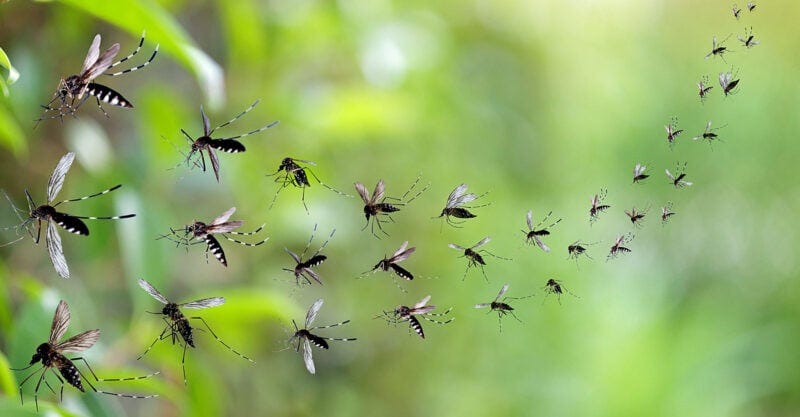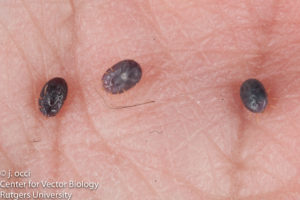Military Routinely Releasing Aluminum-Coated Fiberglass into the Air & GMO Bugs Being Released in Maui
**UPDATE**
Graphene oxide, found in the COVID shots, masks, and PCR swabs, is also sprayed into the air for cloud seeding.
Then there’s the spider silk polymer deployed into the air since 2002 and created by a Canadian Biotechnology company, Nexia. The method to produce the fibers was developed by Nexia in conjunction with the US Army Soldier Biological Chemical Command (SBCCOM). SBCCOM’s Natick Soldier Center has been working with Nexia under a Cooperative Research and Development Agreement (CRADA) since May 1999. Nexia was later sold to PharmAthene, Inc, a privately held biotechnology company focused on the development of biodefense therapeutics.
These same spider silk proteins, which are polyamides, are the same proteins scientists are finding in the rubbery clots in the COVID ‘vaxxed.’
Go here to see a video of a ‘weather modification’ airplane for the purpose of cloud seeding, rain enhancement, snow pack augmentation, hail suppression, and fog dissipation. And go here for an interactive map of 50 years of UN tracking weather modification projects (1952-1999).
The Military Routinely Disperses Aluminum-Coated Fiberglass Into the Air
February 08, 2024

STORY AT-A-GLANCE
- Militaries around the world routinely disperse tiny bits of aluminum-coated fiberglass and plastic — known as “chaff” — into the air column, to shield aircraft and ships from enemy radar
- Chaff has been used for decades, without clear evidence that it’s safe for humans and the environment
- In response to a United Nations Intergovernmental Panel on Climate Change (IPCC) report issued in August 2021, the U.N. announced it’s considering spraying sulfate aerosols into the Earth’s stratosphere to modify climate. The tiny reflective particles would act as reflectors, bouncing sunlight back into space instead of onto the Earth’s surface
- The U.N.’s Intergovernmental Panel on Climate Change (IPCC) is using “climate science” as a vehicle to promote socialist ideology
- According to Dane Wigington, founder of Geoengineeringwatch.org, the risks of geoengineering are so immense, it poses an extinction-level threat to humanity, and the window of opportunity to save ourselves is rapidly closing
See link for article
________________
A few points:
- According to the Naval Medicine investigation, inhalation of whole, intact chaff fibers pose “no risk” to humans due to their larger size. “If inhaled, dipoles are predicted to deposit in the nose, mouth, or trachea and are either swallowed or expelled,” the paper states.6 Note the use of the word “predicted,” however. Predictions are not evidence. They’re basically guessing.
- “Safety” is based on three reports – one of which is based upon fiberglass workers wearing protective gear including respirators, Tyvek suits and safety goggles – all things normal people aren’t wearing.
- Aluminum and fiberglass are not the only toxins being sprayed. Various toxic metals and chemicals are dispersed at high altitude, has been going on for more than 70 years, and is increasing rather than declining.
- The Biden Administration launched a research effort in 2022 to determine the most effective way to dim the sun.11 One proposal involves injecting sulfur dioxide aerosols into the Earth’s stratosphere. The tiny reflective particles would bounce sunlight back into space instead of onto the Earth’s surface.
- Sulfate aerosols reflect more solar radiation back into space and have a serious “side effect” — they lower average precipitation. As a result, additional geoengineering techniques — such as thinning out cirrus clouds in the upper atmosphere — would be necessary to counteract the decrease in precipitation. What could possibly go wrong
- Three months after the IPCC published its panic-inciting report, Australian and British researchers published an original research article warning that stratospheric aerosol injection carries “catastrophic risks” that may well lead us into “a fate worse than [global] warming”:19
- The U.N.’s Intergovernmental Panel on Climate Change (IPCC), Den Boer suggests, is promoting not climate science but socialist ideology, citing as evidence comments made by Ottmar Georg Edenhofer, former co-chair of the IPCC Working Group III, who in a 2010 interview stated that climate issues are about economics, and that:25
“We must free ourselves from the illusion that international climate policy is environmental policy … We must state clearly that we use climate policy de facto to redistribute the world’s wealth.”
Oops. He said the quiet part out loud.
For more:
- https://madisonarealymesupportgroup.com/2021/03/18/the-dimming-new-climate-documentary/
- https://madisonarealymesupportgroup.com/2024/01/17/spider-webs-in-the-pfizer-closet-silk-polymer-geoengineering-link-to-morgellons/
- https://madisonarealymesupportgroup.com/2022/10/14/more-experts-climate-change-is-a-lie-a-scam-green-energy-policies-have-made-the-climate-worse/
- https://madisonarealymesupportgroup.com/2022/09/30/controlling-hurricane-ian/
- https://madisonarealymesupportgroup.com/2023/10/20/new-papers-completely-undermine-the-so-called-settled-science-on-manmade-global-warming/
_____________
https://worldcouncilforhealth.substack.com/p/maui-ground-zero-for-release-of-billions?
Maui ‘Ground Zero’ for Release of Billions of Biopesticide Lab-Altered Mosquitoes
Up to 775,992,000 bacteria-infected mosquitoes could be released in Maui every week for the next 20 years, according to Hawaii Unites
This article was originally published by The Defender — Children’s Health Defense’s News & Views Website.

Up to 775,992,000 bacteria-infected mosquitoes could be released in Maui every week for the next 20 years, according to Hawaii Unites, an environmental advocacy group that last month lost its bid to require the state to conduct an environmental impact statement before allowing the controversial project to proceed.
Hawaii Unites in May 2023 sued the state in the Circuit Court of the First Circuit in Hawaii. The group’s president and founder, Tina Lia, told The Defender:
“These biopesticide lab-altered mosquitoes are already being released in East Maui. Hawaii Unites has taken the state to court seeking a ruling to require an environmental impact statement for the project and comprehensive studies of the risks.”
She said Hawaii Unites describes itself as “a 501(c)(3) nonprofit organization dedicated to the conservation and protection of our environment and natural resources,” with a focus on “protecting the health of Hawai‘i’s people, wildlife, and the ‘āina from the State of Hawaii’s biopesticide bacteria-infected mosquito experiment.” (See link for article)
______________
**Comment**
This website has posted on these dangerous Frankinbugs previously – particularly regarding GMO mosquitoes being released globally. The technology being used is called Wolbachia incompatible insect technique (IIT), previously endorsed by Gates Philanthropy Partners, an arm of the Bill & Melinda Gates Foundation, although there does not appear to be a direct link between these organizations and the Hawaii ongoing project.
This website has also written about the unknowns of Wolbachia:
Dogs treated for heart worm (D. immitis) have trouble due to the heart worm medication causing Wolbachia to be released into the blood and tissues causing severe Inflammation in pulmonary artery endothelium which may form thrombi and interstitial inflammation. Wolbachia also activates pro inflammatory cytokines. Pets treated with tetracycline a month prior to heart worm treatment will kill some D. immitis as well as suppress worm production. When given after heart worm medication, it may decrease the inflammation from Wolbachia kill off.
http://www.critterology.com/articles/wolbachia-and-their-role-heartworm-disease-and-treatment
An expert who testified on behalf of Hawaii Unites warned that the project, far from mitigating mosquito-borne illness, may lead to bacterial spread, the invasion of lab-altered mosquitoes into unintended areas and other environmental consequences.
According to the lawsuit, “documentation and studies from several sources, including government agencies, confirm that the experiment may not even work for its intended purpose and has the potential for significant environmental impacts.”
When have we let little things like safety and efficacy stand in the way of making money?
“The court failed to acknowledge Dr. Pang’s serious concerns about horizontal transmission of introduced bacteria, biopesticide wind drift of lab-altered mosquitoes into unintended areas, superinfection of mosquitoes with multiple bacteria strains, increased pathogen infection and disease-spreading capability in mosquitoes, and the experimental nature of the project — all issues that were insufficiently addressed or missing entirely from the FEA, and facts material to the lawsuit.” ~ Tina Lia, President of Hawaii Unites
For more:
- https://madisonarealymesupportgroup.com/2017/07/10/wolbachia-the-next-frankenstein/
- https://madisonarealymesupportgroup.com/2018/02/12/wolbachia-laced-mosquitoes-being-released-why-lyme-msids-patients-might-be-negatively-affected/
- https://madisonarealymesupportgroup.com/2022/09/28/gates-funded-factory-breeds-30-million-mosquitoes-per-week-for-release-in-11-countries-ge-mosquitoes-vaccinate-a-human/
- https://www.sott.net/article/311265-Could-there-be-a-link-between-the-release-of-genetically-modified-mosquitoes-and-the-Zika-virus What is particularly interesting is a comment left after the article by Rabelais that is worth sharing:
This convoluted line of investigation omits one important historical precedence; intentionally infected insect vectors have been used numerous times over the past half century or so to non-consensually experiment on populations both foreign and domestic. Occam’s razor would posit that this sudden outbreak of Zika in far flung corners of the world is no different.
A large Canadian insect research facility raised and shipped millions of mosquitoes to the US military biowarfare center at Ft Detrick, in the 1950s, where they were infected with weaponized mycoplasma derivatives. These were then released from aircraft flying late at night over Punta Gorda, Fl. Shortly thereafter the first reported cases of chronic fatigue syndrome and fibromyalgia began showing up in local hospitals and clinics. Are we to believe that this highly effective dispersal method has been abandoned?
While it is conceivably possible that the complicated biological Rube Goldberg theories described in this article are the causal factor in this newest disease scare, I’d wager that this thinking is simply cover for a much more direct method of spreading diseases in countries not fully on-board with the Anglo-zionist agendas. The release of infected insect vectors (both mosquito and tick) have been used frequently over the decades since WW II.
Canadian Professor Donald W. Scott, using US government FOIA documents gathered in the 1970s, in his two books and numerous speaking engagements, described in great detail the politicians, scientist/researchers, institutions and methods by which this most odious form of warfare has been conducted
Books by Scott:
- The Brucellosis Triangle
- The Extremely Unfortunate Skull Valley Incident
- Aids: The Crime Beyond Belief Please see this eye-opening documentary: The Origins of AIDS shares the hypothesis that HIV may have been caused by mass vaccination against Polio in Congo between 1957-1960.
- Amyotrophic Lateral Sclerosis On page 20 of their Patent, the following patients were listed as being infected with the Mycoplasma fermentans: AIDS, Alzheimer’s, Sarcoidosis, Lupus, chronic fatigue syndrome and others [Appendix Two]. The authors extend the above list by adding Amyotrophic Lateral Sclerosis, supported by solid, reproducible scientific evidence. The pathogenic mycoplasma up-takes pre-formed cholesterol from the Glial cells which surround the degenerating motor-neurons of the ALS victim. The loss of this cholesterol prevents the motor neurons from replenishing and replacing damaged synapses. With the synapses not functioning, the messages from the cortex of the brain do not get through to the muscles and Lou Gehrig’s Disease presents. All the diseases listed in the U.S. Government Patent are indeed caused by a common factor: the Pathogenic Mycoplasma. With the probable cause well-established, the Scotts conclude their study with a possible cure for all the neurosystemic degenerative diseases.
- For more on Mycoplasm: https://madisonarealymesupportgroup.com/2015/08/12/connecting-dots-mycoplasma/
- https://madisonarealymesupportgroup.com/2020/02/25/pathogenic-mycoplasma-infections-in-chronic-illnesses-general-considerations-in-selecting-conventional-and-integrative-treatments/
- https://madisonarealymesupportgroup.com/2016/02/07/mycoplasma-treatment/


